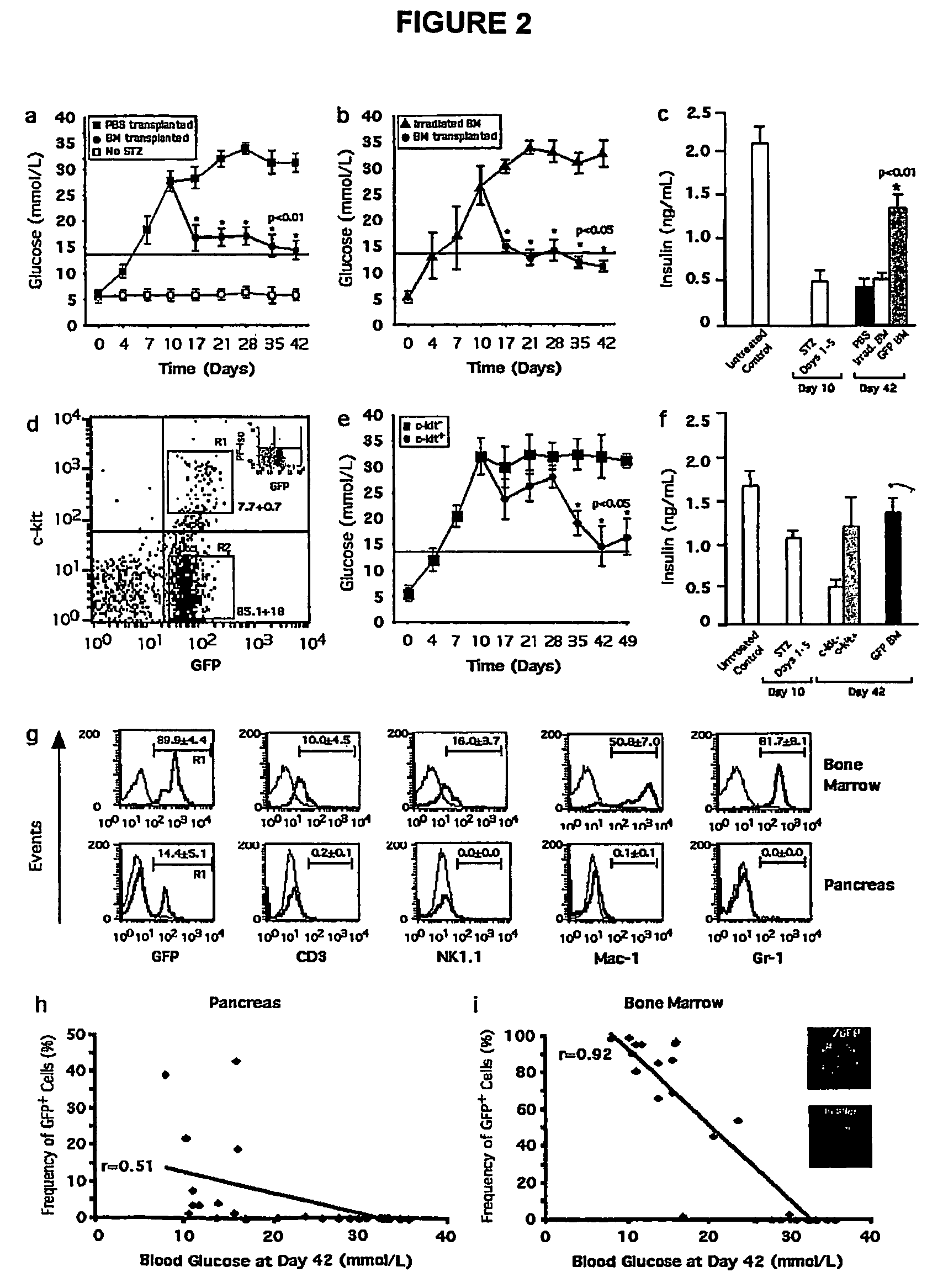Regeneration initiating cells
a technology of initiating cells and initiating cells, which is applied in the direction of artificial cell constructs, biocide, drug compositions, etc., can solve the problems of only recognizing and causing endogenous repair, and achieve the effect of rescuing hyperglycemia and enhancing pancreatic repair
- Summary
- Abstract
- Description
- Claims
- Application Information
AI Technical Summary
Benefits of technology
Problems solved by technology
Method used
Image
Examples
example 1
Bone Marrow Derived Regeneration Initiating Cells Rescue Hyperglycemia by Regeneration of Recipient Islets
Methods
Induction of Hyperglycemia and Blood Glucose Monitoring
[0058]8-10 week old, immune deficient NOD / SCID mice (Jackson Laboratories, Bar Harbor, Mass.) were injected with 35 mg / kg streptozotozin (STZ) (Sigma-Aldrich, Oakville, ON) daily for days 1-5. STZ was solubilized in citrate buffer pH 4.5 and injected within 15 minutes of preparation. Blood glucose was measured between 8-10 am, twice weekly from days 0-14 and weekly from days 14-42 with a glucometer Elite® diabetes care system (Bayer). Peripheral blood (100 μL) was collected on days 0, 10 and 42 and serum insulin was quantified using an 125I-labelled murine insulin-specific radio-immuno assay kit (Linco). For the in vivo detection of proliferating cells in the pancreas of recipient NOD / SCID mice, BrdU (50 μg / kg body weight in PBS, Sigma) was IP injected 16 and 2 hours prior to pancreas extraction. NOD / SCID mice were ma...
example 2
Human Regeneration Initiating Cells
[0081]The isolated mononuclear cells from the human CB were transplanted intravenously into recipient NOD / SCID mice treated with streptozotozin. The LDMNCs were insolated by gradient centrifugation using Ficoll-pague (Pharmacia, USA). The mice were either transplanted with high or low doses of the mononuclear cells. As is shown in FIG. 7, in mice receiving 5-20×106 mononuclear cells there was engraftment of the cells in the bone marrow but not in the pancreas. In contrast, when mice receive 50×106 mononuclear cells there was engraftment of both bone marrow and the pancreas. At low doses of the mononuclear cells, no reduction in hyperglycemia was demonstrated although it was demonstrated at the higher dose. It is expected that the different observations at high and low doses are due to the fact that the regeneration initiation cells occur at a low frequency and therefore their effect is demonstrated only at higher doses. In contrast, hematopoietic s...
PUM
| Property | Measurement | Unit |
|---|---|---|
| pH | aaaaa | aaaaa |
| thickness | aaaaa | aaaaa |
| thickness | aaaaa | aaaaa |
Abstract
Description
Claims
Application Information
 Login to View More
Login to View More - R&D
- Intellectual Property
- Life Sciences
- Materials
- Tech Scout
- Unparalleled Data Quality
- Higher Quality Content
- 60% Fewer Hallucinations
Browse by: Latest US Patents, China's latest patents, Technical Efficacy Thesaurus, Application Domain, Technology Topic, Popular Technical Reports.
© 2025 PatSnap. All rights reserved.Legal|Privacy policy|Modern Slavery Act Transparency Statement|Sitemap|About US| Contact US: help@patsnap.com



